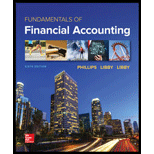
(Supplement 7A) Recording Inventory Purchases, Allowances, Sales, and Shrinkage Using Perpetual FIFO (Chapters 6 and 7)
Tracer Advance Corporation (TAC) sells a tracking implant that veterinarians surgically insert into pets. TAC began January with an inventory of 400 tags purchased from its supplier in November last year at a cost of $24 per tag, plus 200 tags purchased in December last year at a cost of $30 per tag. TAC uses a perpetual inventory system to account for the following transactions.
| Jan. 3 | TAC gave 500 tags to a courier company (UPS) to deliver to veterinarian customers. The sales price was $60 per tag, and the sales terms were n/30, FOB shipping point. |
| Jan. 4 | UPS confirmed that all 500 tags were delivered today to customers. |
| Jan. 9 | TAC ordered 700 tags from its supplier. The supplier was out of stock but promised to send them to TAC as soon as possible. TAC agreed to a cost of $43 per tag, n/30. |
| Jan. 19 | The 700 tags ordered on January 9 were shipped to and received by TAC today. TAC complained about the delay between order and shipment date, so the supplier reduced the amount TAC owed by granting an allowance of $1 per tag ($700 total). |
| Jan. 23 | TAC gave 750 tags to UPS, which were delivered “same day” to veterinarian customers at a price of $60 per tag, n/30, FOB shipping point. |
| Jan. 28 | TAC received cash payment from customers for 400 of the tags delivered January 4. |
| Jan. 31 | TAC counted its inventory and determined 40 tags were on hand. TAC made a “book-to-physical adjustment” to account for the missing 10 tags. |
TIP: The book-to-physical adjustment is described in Chapter 6.
Required:
Assume TAC uses FIFO in its perpetual inventory system. For each date, prepare the
Want to see the full answer?
Check out a sample textbook solution
Chapter 7 Solutions
Loose Leaf For Fundamentals Of Financial Accounting
- A business purchases depreciable equipment for 191 and sells it a few years later for 166. At the time of the sale, accumulated depreciation totals 106. If the company's tax rate is 39, what is the total after-tax cash flow that will result from selling this asset?arrow_forwardGet correct answer general accounting questionarrow_forwardneed help this questionarrow_forward
- What is the total debt equity ratio of this financial accounting question?arrow_forwardDoverly Co. has total assets of $9,200,000 and a total asset turnover of 2.10 times. Assume the return on assets is 10.5%. What is the profit margin? Right Answerarrow_forwardDoverly Co. has total assets of $9,200,000 and a total asset turnover of 2.10 times. Assume the return on assets is 10.5%. What is the profit margin?arrow_forward
- Principles of Accounting Volume 1AccountingISBN:9781947172685Author:OpenStaxPublisher:OpenStax College
